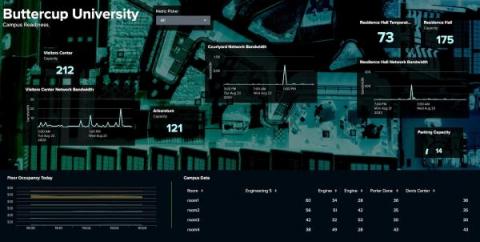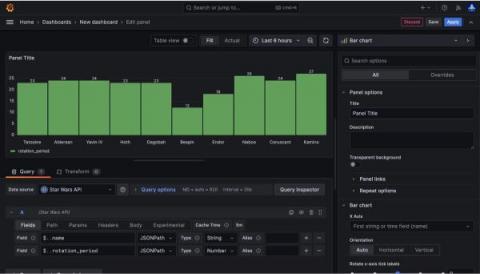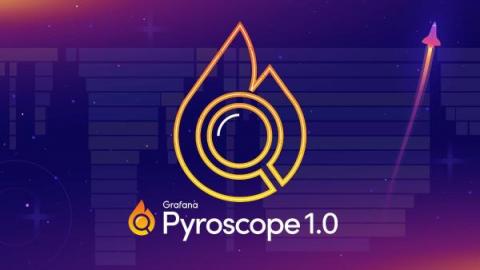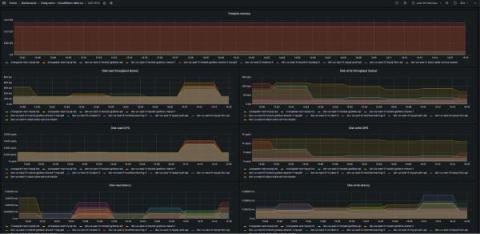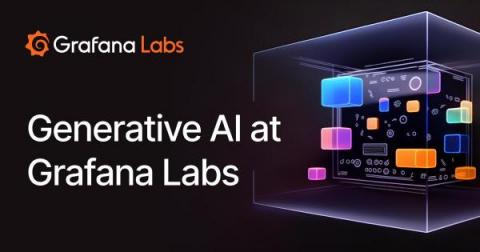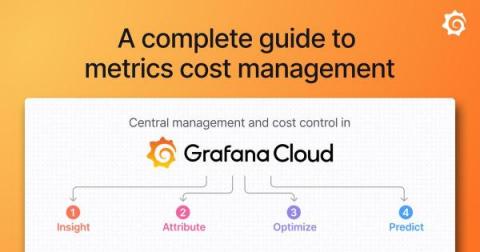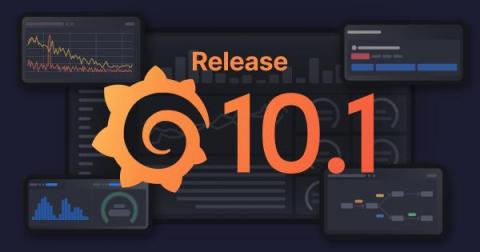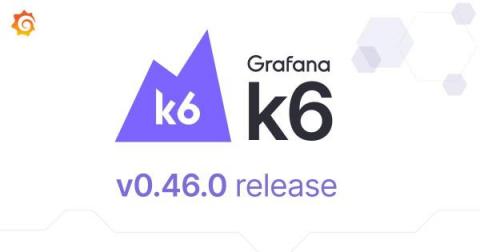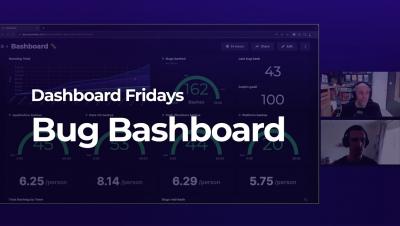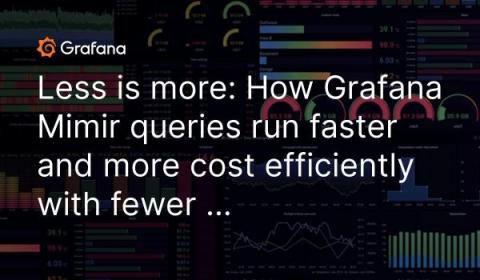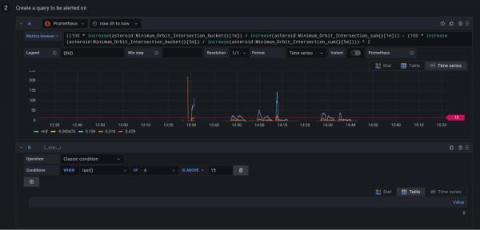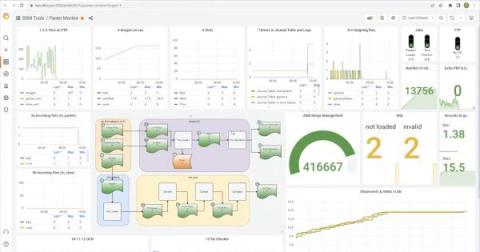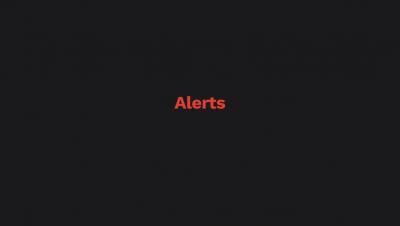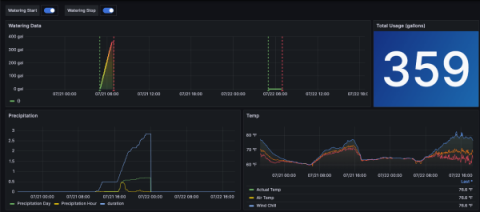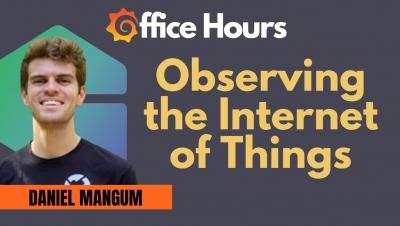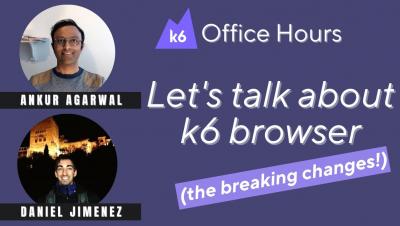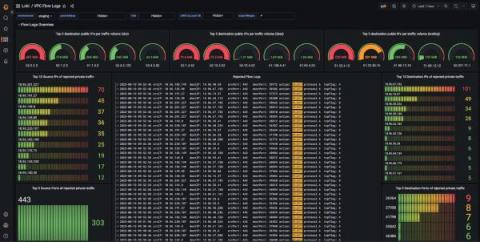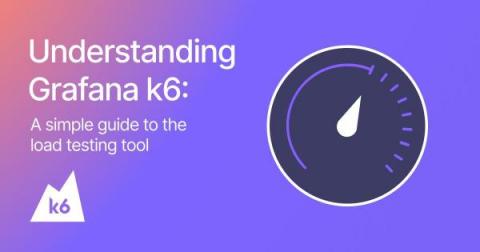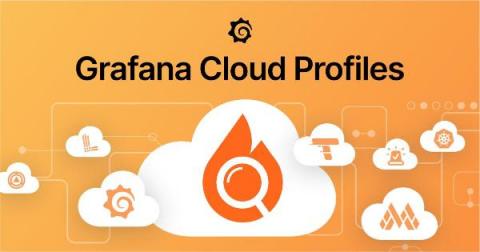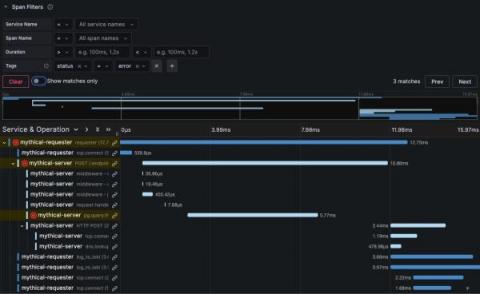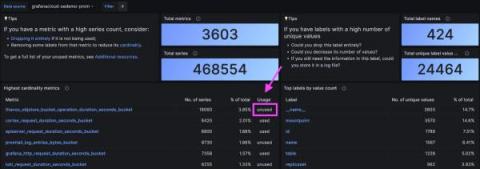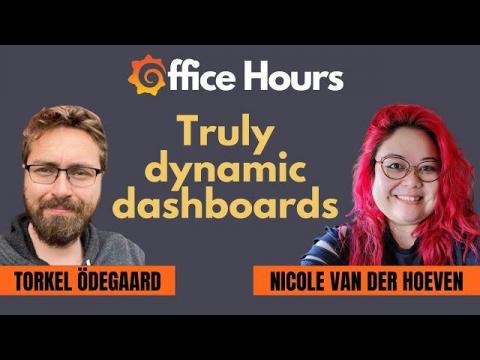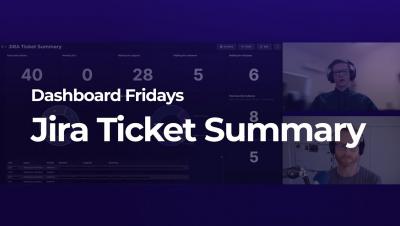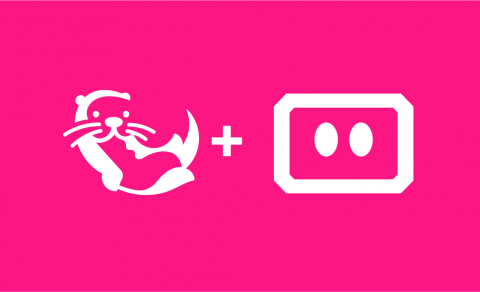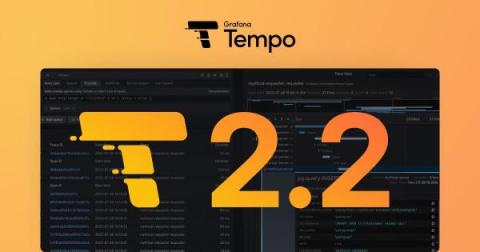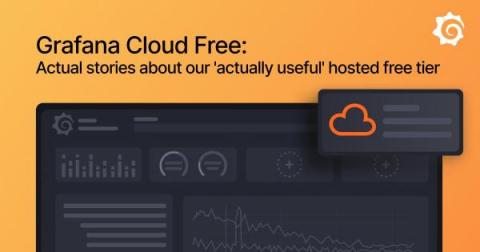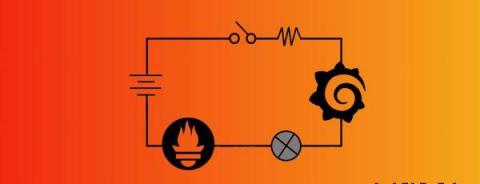Operations | Monitoring | ITSM | DevOps | Cloud
August 2023
How to learn Grafana with Grafana Play (Grafana Office Hours #10)
Dashboard Studio: How to Configure Show/Hide and Token Eval in Dashboard Studio
Grafana JSON API: How to import third-party data sources in Grafana Cloud
Have you ever wanted to test out Grafana Cloud but don’t have any available data to monitor? Well, have no fear! With the Grafana JSON API plugin, you can query publicly available JSON endpoints. The JSON API is a wonderful way to start using Grafana Cloud. You can quickly see data in action, and there are a multitude of things you can build, analyze, and monitor using the JSON API.
Grafana Pyroscope 1.0 release: continuous profiling for a modern open source observability stack
When we launched Pyroscope in 2021, we had one clear goal: Give developers a powerful open source continuous profiling tool for collecting, storing, and analyzing profiling data. Grafana Labs had a similar goal when they released Grafana Phlare, a horizontally scalable, highly available open source profiling solution inspired by databases like Grafana Loki, Grafana Mimir, and Grafana Tempo.
Centralize AWS observability with Grafana Cloud
If you’re using AWS, you’re almost certainly using Amazon CloudWatch to collect and analyze observability data from your favorite AWS services. And while AWS remains the most broadly adopted cloud platform, not every company uses it exclusively, which means you need a tool that gives a centralized view across all your environments. With Grafana Cloud, you can do just that.
Generative AI at Grafana Labs: what's new, what's next, and our vision for the open source community
As you’d imagine, generative AI has been a huge topic here at Grafana Labs. We’re excited about its potential role in bridging the gap between people and the beyond-human scale of observability data we work with every day. We’ve also been talking a lot about where open source fits in — especially if that Google researcher is right and OSS will outcompete OpenAI and friends. What role can we play to bring the community along?
Getting started with Grafana Loki (Grafana Office Hours #09)
A complete guide to metrics cost management in Grafana Cloud
The macro economy can put a lot of pressure on organizations to reduce costs, typically with the central SRE and platform engineering teams coming under scrutiny. One common workaround we’ve seen countless teams make is compromising their observability by ingesting fewer metrics in the name of cost savings. But for centralized SRE/observability teams, the response to macro conditions should not be monitor less, but rather monitor smarter.
Grafana vs. Kibana
Every organization requires data analysis and monitoring solutions to gain insights into their data. Grafana and Kibana are two of the most popular open-source dashboards for data analysis, visualization, and alerting.
Grafana 10.1 release: Enhanced flame graphs, new geomap network layer, and more
Grafana 10.1 is here! The latest Grafana release introduces new features and improvements that help deepen your observability insights in Grafana, including an improved flame graph, a new geomap network layer, simplified alerting workflows, and more. Grafana 10.1: Download now! For an overview of all the features in this release, check out our What’s New documentation. And to learn the details about all the Grafana 10.1 updates, read our changelog for more information.
Grafana k6 v0.46.0 release: TLS per gRPC connection support, new usage reports in Grafana Cloud k6, and more!
Grafana k6 v0.46.0 is here! The new release features the ability to configure TLS, new usage reports and PDF reports in Grafana Cloud, and tons of improvements for Grafana k6 OSS and Grafana Cloud k6. Here’s an overview of Grafana k6 v0.46.0, as well as some other important updates from the k6 team and community.
How we scaled Grafana Cloud Logs' memcached cluster to 50TB and improved reliability
Grafana Loki is an open source logs database built on object storage services in the cloud. These services are an essential component in enabling Loki to scale to tremendous levels. However, like all SaaS products, object storage services have their limits — and we started to crash into those limits in Grafana Cloud Logs, our SaaS offering of Grafana Loki.
Dashboard Stories: Gamified bug bash tracking
Dashboard Stories: Observing Garden Irrigation water usage with SQL
Dashboards & Reports for New-Age Observability with DX UIM from Broadcom
Less is more: How Grafana Mimir queries run faster and more cost efficiently with fewer indexes
Over the past six months, we have been working on optimizing query performance in Grafana Mimir, the open source TSDB for long-term metrics storage. First, we tackled most of the out-of-memory errors in the Mimir store-gateway component by streaming results, as we discussed in a previous blog post. We also wrote about how we eliminated mmap from the store-gateway and as a result, health check timeouts largely disappeared.
Monitoring machine learning models in production with Grafana and ClearML
Victor Sonck is a Developer Advocate for ClearML, an open source platform for Machine Learning Operations (MLOps). MLOps platforms facilitate the deployment and management of machine learning models in production. As most machine learning engineers can attest, ML model serving in production is hard. But one way to make it easier is to connect your model serving engine with the rest of your MLOps stack, and then use Grafana to monitor model predictions and speed.
Grafana vs. SolarWinds - The Dashboards
Dashboards are great ways to visualize different KPIs in a single place. Metrics from all over your system can be framed together and viewed on a single screen, helping to correlate them and reducing the overall effort of analysis. But when it comes to Grafana vs. SolarWinds, which one is better? It is often difficult to choose between their dashboarding capabilities. Both tools provide their own visualizations and help bring out interactive dashboards for users to use.
Using DX NetOps Dashboards To Harness the Power of AppNeta Data
In today’s dynamic, complex network environments, there’s a big difference between having monitoring data and having intelligence. To troubleshoot issues quickly, it’s vital to have timely, intuitive visibility into the metrics that matter. With the combination of AppNeta and DX NetOps, teams can gain the insights they need to efficiently and intelligently manage their environments.
Reduce MTTR with Grafana, Grafana k6, and Prometheus: Inside DHL's observability stack
Each year, more than 296 million packages are shipped around the world via DHL and their premium service, Time Definite International. And at DHL Express Switzerland, a local unit of the international logistics and shipping company, the IT team provides solutions for tracking customs clearance progress, analytics, mobile and optical character recognition (OCR) scanning, and warehouse management on every package that moves through Switzerland.
Dashboards, Metrics & Alerts management in SigNoz
How to monitor pool water levels from anywhere with Grafana
I’ve had a swimming pool at my house in Massachusetts since 2016. One of the problems that pool owners like myself face when we go on vacation or leave for several days is evaporation from the pool and the water level dropping below the skimmers. This can happen due to sunlight and warm temperatures. It can also happen when temperatures drop at night and the pool is being heated — the water temperature is warmer than the air, causing the water to evaporate.
Observing the Internet of Things (Grafana Office Hours #08)
What's new in k6 browser? (k6 Office Hours #98)
How Qonto used Grafana Loki to build its network observability platform
Christophe is a self-taught engineer from France who specializes in site reliability engineering. He spends most of his time building systems with open-source technologies. In his free time, Christophe enjoys traveling and discovering new cultures, but he would also settle for a good book by the pool with a lemon sorbet.
Understanding Grafana k6: A simple guide to the load testing tool
Grafana k6 is a powerful, developer-friendly tool designed and engineered with a focus on load testing — but it boasts capabilities that extend far beyond that use case. Understanding the inner workings of k6 is helpful to fully leverage its potential, and to tailor the tool to your specific testing needs. Read on to learn how k6 is structured, and how its underlying design provides the best possible reliability and load testing experience.
Unify your observability signals with Grafana Cloud Profiles, now GA
Observability has traditionally been conceptualized in terms of three core facets: logs, metrics, and traces. For years, these elements have been seen as the “pillars” of observability, serving as the foundational components for system monitoring and delivering key insights to improve system performance. However, with the exponential growth in system complexity, a more comprehensive and unified perspective on observability has become necessary.
What's new in distributed trace visualization in Grafana
At Grafana Labs, we are constantly improving our feature set, and tracing is no different. Traces are often overshadowed by logs and metrics, but they’re a pillar of observability for a reason. Used correctly, organizations that can quickly and successfully follow a chain of events through a system gain a more holistic view of their systems and are better equipped to find and fix issues faster.
Managing Prometheus cardinality in Grafana Cloud: Adaptive Metrics FAQ
One of the most talked about topics in observability today is centered around the question of how to get more value out of the ever-increasing amount of data collected by agents, collectors, scrapers, and the like. Back in May, we announced Adaptive Metrics, a new feature in Grafana Cloud that allows you to reduce the cardinality of Prometheus metrics and the overall volume and costs of your metrics.
IoT Dashboards with Grafana and Prometheus
The Internet of Things (IoT) - is a number of physical devices connected to one network that enables the system to interact with the external world. A great deal of the work surrounding IoT is monitoring, as it’s impossible to react without knowing the situation. For example, we might build a greenhouse system for agriculture that can maintain optimal conditions for growing crops. For this purpose, we need to have sensors picking up information about the temperature and humidity.
How to get started with Grafana and Docker (Grafana Office Hours #07)
New in Grafana 10: Grafana Scenes for building dynamic dashboarding experiences
With Grafana 10, the latest major release of our data visualization platform, we wanted to explore new ways to empower our developer community. Case in point: Grafana Scenes, a new frontend library that enables developers to create dashboard-like experiences — such as querying and transformations, dynamic panel rendering, and time ranges — directly within their Grafana application plugins.
Dashboard Stories: High-level Jira ticket summary
Dashboard Stories: A unified view of NSW snowboarding conditions
Using Helm Dashboard and Intents-Based Access Control for Pain-Free Network Segmentation
Helm Dashboard is an open-source project which graphically shows installed Helm charts, revisions, and changes to their Kubernetes resources. The intents operator is an open-source Kubernetes operator which makes it possible to roll out network policies in a Kubernetes cluster, chart by chart, and gradually achieve zero trust or network segmentation.
Grafana Tempo 2.2 release: TraceQL structural operators are here!
Get excited about Grafana Tempo 2.2! Not only is this release on time, but it is also chock full of TraceQL features and performance improvements. I was honestly a little shocked by how much we have accomplished in the last three months when summarizing the changelog.
Grafana Cloud Free: Actual stories about our 'actually useful' hosted free tier
It’s no secret that anyone can download our open source software and run it, because — once more with feeling — open source is in our DNA. But it can be hard to set up and configure a whole stack from scratch, which is why we offer Grafana Cloud as a fully managed observability platform.
Connecting Prometheus and Grafana
Using Prometheus and Grafana together is a great combination of tools for monitoring an infrastructure. In this article, we will discuss how Prometheus can be connected with Grafana and what makes Prometheus different from the rest of the tools in the market. MetricFire's product, Hosted Graphite, runs Graphite (a Prometheus alternative) with Grafana dashboards for you so you can have the reliability and ease of use that is hard to get while doing it in-house.




